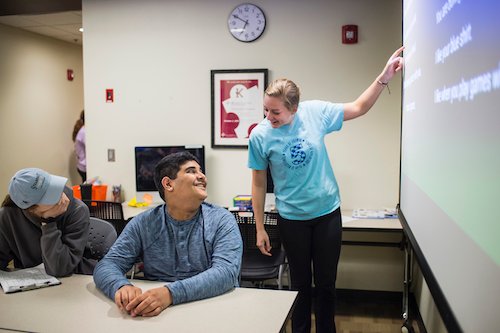The Individualized Education Plan (IEP) is both a document and a process. The document outlines the special education services the child will receive. This includes academic, social, developmental and functional goals and objectives. The IEP is written in a way that is measurable to determine progress. Yearly, caregivers attend their loved ones IEP meeting to reassess goals and determine progress. The IEP team must consider the child’s strengths, parental concerns, results of recent evaluations, and the child’s functional and classroom performance.
The United States Department of Education’s Individuals with Disabilities Education Act (IDEA) requires a child’s IEP to include a statement of the child’s present levels of academic achievement and functional performance, including how the child’s disability affects the child’s involvement and progress in the general education curriculum. A statement of measurable annual goals, including academic and functional goals, designed to meet the child’s needs that result from the child’s disability to enable the child to be involved in and make progress in the general education curriculum, and meet each of the child’s other educational needs that result from the child’s disability.
The IEP consists of 10 parts:
- Identifying information
- Present level of academic achievement and functional performance
- Statements of assessment, curriculum, and outcome
- Transition services (Transition planning must begin at age 14 in Pennsylvania)
- Annual goals and short-term objectives
- Accommodations, modifications, and supplementary aides
- Related services
- Consideration of special factors (Interfering behaviors)
- Extended school year services
- Educational placement and least restrictive environment
It is important for both the caregiver and the individual to understand that they have a say in the IEP planning and process. Caregivers can advocate for the needs of their child by proposing ideas for the IEP. The individual’s IEP will support them until they turn 21. It is important for caregivers to know that the individual will be supported by their IEP until the summer after the school year they turn 21. The individual does have the right to extended school year. The IEP addresses the individual’s present level of functioning for a starting point and baseline. The IEP team will then come up with achievable goals and objectives for the individual to meet.
IEP goals and objectives should be SMART. S-Specific- Specific goals target areas of academic achievement and functional performance. Include clear descriptions of the knowledge and skills that will be taught and how the child’s progress will be measured. They should be objective instead of subjective. M- Measurable- The goal or objective must be able to be counted or observed. This allows the parents and teachers to know how much progress the child has made since the performance was last measured. IEP goals include three components that must be stated in measurable terms the direction of behavior (increase, decrease, maintain, etc.), the area of need (i.e., reading, writing, social skills, transition, communication, etc.), and the level of attainment (i.e., to age level, without assistance, etc.). A- Action Words- “the student will be able to…..”. R- Relevant and Realistic- SMART IEPs have realistic, relevant goals and objectives that address the child’s unique needs that result from the disability. SMART IEP goals are not based on district curricula, state or district tests, or other external standards. SMART IEPs have realistic, relevant goals and objectives that address the child’s unique needs that result from the disability. SMART IEP goals are not based on district curricula, state or district tests, or other external standards. T- Time- Limited- These goals determine what the child needs to know and be able to do after a certain period of time. Determine the starting point for each child’s needs (present levels of academic achievement and functional performance) and enables the teacher/parent to monitor progress at regular intervals.
While the Kinney Center does not write IEP’s, depending on your participation in our programs, we can attend your loved ones’ plan meetings to ensure continuity of care. For more information on IEPs please watch this video from the Kinney Center’s Director of Programs, Dr. Jessica Joseph.

